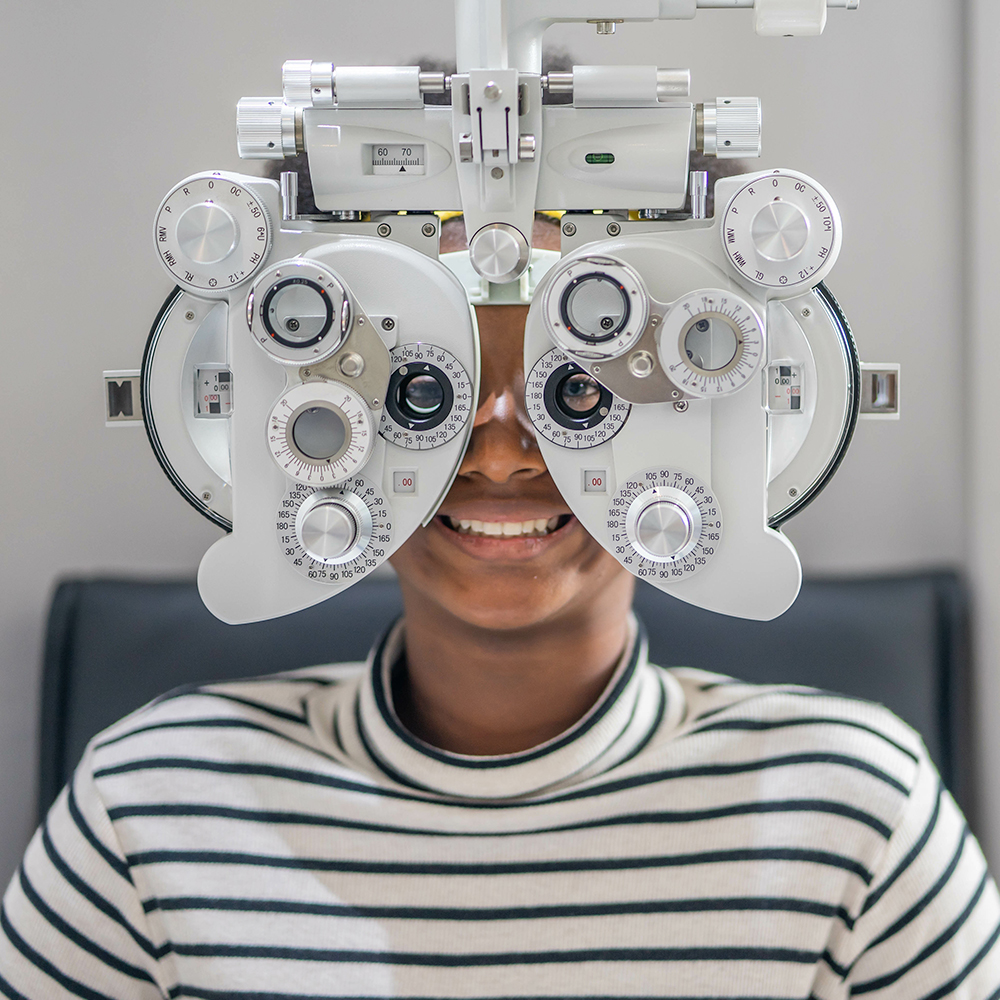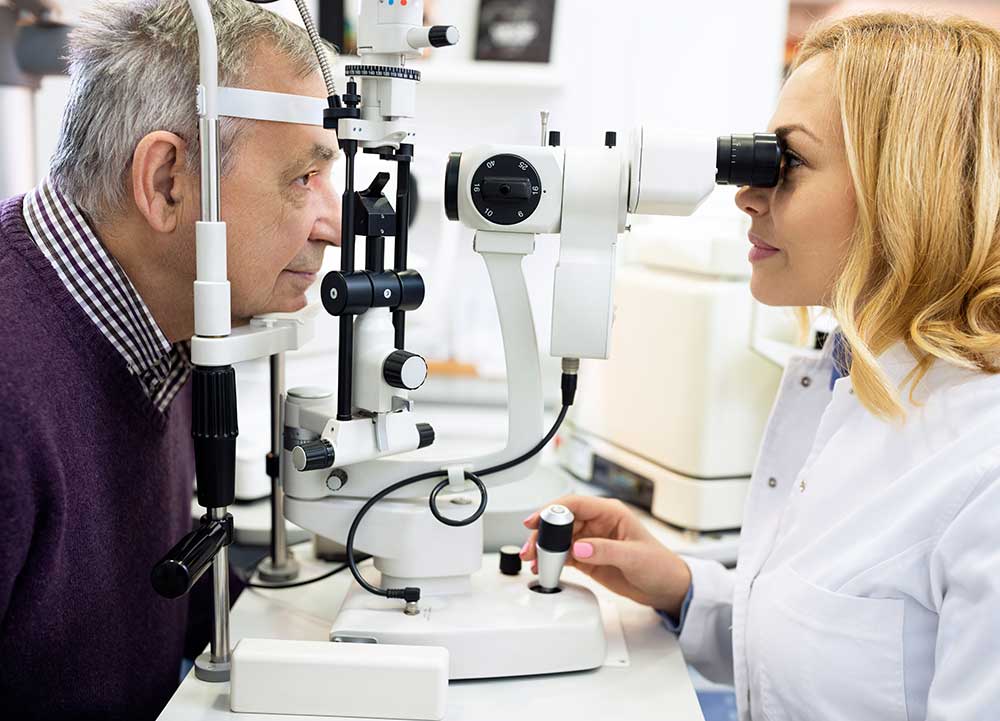Discovering the most recent Technical Improvements in Optometry and What They Mean for Eye Doctors
In the ever-evolving area of optometry, recent technical improvements are improving just how specialists approach eye treatment. From the precision of Optical Comprehensibility Tomography to the nuanced insights provided by AI-driven analysis tools, these advancements are setting brand-new standards in patient analysis and therapy. Teleoptometry is positioned to redefine accessibility, making certain that competence goes beyond geographical restrictions. As these developments penetrate the practice, eye doctors are encountered with the challenge of accepting these devices to improve individual end results. The question continues to be: just how will these technological changes redefine the roles and duties within the career?
Innovations in Diagnostic Devices
Progressing the field of optometry, advancements in diagnostic tools have transformed the way eye care professionals assess and detect eye conditions and aesthetic problems. The past decade has actually experienced considerable technical improvements, making it possible for more comprehensive and accurate examinations.
An additional key technology is the introduction of advanced corneal topography systems, which map the surface area curvature of the cornea with accuracy. These tools are particularly advantageous for suitable call lenses and diagnosing corneal problems. Moreover, electronic retinal imaging has actually transformed standard ophthalmoscopy, supplying detailed, panoramic sights of the retina that facilitate comprehensive aesthetic exams.
The development of wavefront aberrometry has also been essential, allowing the evaluation of refractive mistakes with unequaled accuracy (Eye Doctor Optometrist). This modern technology assists in customizing rehabilitative lenses and enhancing medical end results for refractive surgeries. Collectively, these diagnostic improvements encourage optometrists to deliver superior client treatment, making certain very early treatment and customized treatment approaches, inevitably boosting aesthetic health and wellness end results
AI in Person Management
Building on the foundation of advanced diagnostic devices, the consolidation of fabricated knowledge (AI) in individual administration represents a transformative leap for optometry. AI systems are increasingly used to improve effectiveness, precision, and personalization in patient care. By evaluating large quantities of data, AI can identify patterns and predict potential eye problems, allowing optometrists to tailor treatments better. This ability is critical in taking care of chronic eye conditions such as glaucoma and diabetic person retinopathy, where early discovery and continuous monitoring are crucial.
Moreover, AI-driven platforms promote structured individual interactions and management procedures. Automated organizing, virtual appointments, and individualized follow-up plans not just boost person contentment but additionally enhance time management for professionals. These systems can triage patients based on the seriousness of their problems, making sure that those in essential requirement obtain prompt focus.
Furthermore, AI enhances decision-making by offering eye doctors with evidence-based suggestions and therapy paths. By incorporating data from electronic wellness records, AI devices use understandings that notify clinical choices, minimizing the risk of errors and enhancing patient end results. As AI remains to advance, its function in person management will likely expand, reshaping the landscape of optometric care.
Advances in Retinal Imaging
In the realm of optometry, retinal imaging has observed remarkable technological improvements that are boosting analysis capacities and person care. Innovations such as Optical Coherence Tomography (OCT) and fundus photography have actually changed just how eye doctors imagine and evaluate the retina. OCT, specifically, provides high-resolution, cross-sectional photos of the retina, permitting the in-depth assessment of its layers. This capacity is very useful for very early discovery and management of conditions like glaucoma, diabetic person retinopathy, and age-related macular deterioration.
Improved imaging modalities like OCT angiography are more This Site refining diagnostic accuracy. Eye Doctor. Such advancements promote the identification of minute retinal modifications that can represent condition development.
In addition, improvements in expert system are increasing retinal imaging by making it possible for automatic evaluation of huge datasets. These systems assist eye doctors in identifying patterns indicative of pathology, thereby enhancing analysis precision and performance. Collectively, these developments are transforming retinal imaging into a cornerstone of modern-day eye care, improving results and increasing restorative opportunities.
Teleoptometry's Expanding Role
Teleoptometry is progressively ending up being an essential element of eye care, driven by advancements in electronic communication and diagnostic tools. This is especially helpful in underserved and rural locations where access to specialized eye treatment is usually minimal.
The combination of expert system (AI) additional enhances teleoptometry, allowing the evaluation of aesthetic data and helping in the detection of ocular problems such as glaucoma and diabetic retinopathy. AI-powered formulas can rapidly translate complicated imaging information, supplying optometrists with valuable understandings that reinforce professional decision-making.
Furthermore, teleoptometry supports connection of treatment through seamless assimilation with electronic wellness records (EHRs), allowing eye doctors to maintain thorough client histories. This ensures that individuals obtain consistent and tailored treatment even when seeking advice from different experts.
Despite these advantages, difficulties continue to be, consisting of making sure information safety and security and handling client assumptions. Nonetheless, teleoptometry stands for a substantial stride in address the direction of even more available, reliable, and patient-centered eye care. As modern technology advances, its function is poised to expand even more.

Future Patterns in Eye Care
A myriad of innovative trends is established to improve the future of eye treatment, driven by technical advancements and the developing needs of people. One significant fad is the assimilation of fabricated knowledge (AI) in diagnostics, which assures to boost the accuracy and effectiveness of eye evaluations. AI algorithms can evaluate vast quantities of data from retinal photos, potentially detecting problems like diabetic retinopathy and glaucoma earlier than standard methods.
Additionally, tailored medication is acquiring traction in optometry, with genetic testing educating tailored treatment plans. This strategy intends to maximize individual outcomes by customizing interventions to individual hereditary profiles. Wearable modern technology, such as smart call lenses, is additionally on the horizon, supplying real-time surveillance of intraocular stress or glucose degrees, thus giving continuous understandings right into ocular and systemic health and wellness.
The adoption of increased truth (AR) and online reality (VIRTUAL REALITY) in training and client education and learning is an additional arising trend. These modern technologies use immersive experiences that can improve understanding and abilities both for individuals and optometrists. As these fads pop over to this web-site develop, optometrists need to remain abreast of technical developments to provide advanced care, guaranteeing better patient end results and complete satisfaction in the dynamic landscape of eye care.
Final Thought

Jointly, these analysis innovations encourage eye doctors to deliver remarkable patient care, making sure early intervention and customized therapy techniques, eventually improving aesthetic health and wellness outcomes.

As these modern technologies proceed to advance, eye doctors have to adapt and integrate them right into practice, eventually maximizing workflow efficiency and raising the criterion of eye care delivered to individuals.